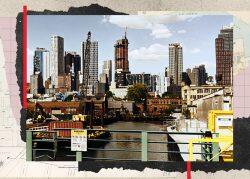The sun appears to be setting on the current iteration of Continuum’s proposed Crown Heights development.
On Monday, Eric Adams, Brooklyn Borough President and likely the city’s next mayor, officially recommended against pursuing the project in its current form. His decision comes after months of outcry from residents and the neighboring Brooklyn Botanic Garden, who say the project’s 39-story towers would block sunlight from reaching the garden’s rare flowers.
The borough president’s recommendation is neither binding nor surprising, but it’s still another blow to the embattled project that has faced coordinated opposition from the moment Ian Bruce Eichner’s company proposed it.
At present, Continuum’s plan would create roughly 1,500 units, 790 of which would be rented at below-market rates. At a recent community board meeting, the developer floated a downsized version of the project, which would reduce the towers to 17 stories and market just a quarter of the units at affordable rates. The community board refused to consider the updated plan, citing insufficient time and environmental impact documentation to review. It voted 23 to 2 against rezoning for the project.
Adams’ vote complicates his already-muddled relationship with real estate. As borough president, Adams has called for more development while also blaming development for some of Brooklyn’s most dogged issues. Still, industry bigwigs donated handsomely to his mayoral campaign.
Read more


Continuum, which declined to comment, has been clear that it will proceed with the development in some form, whether or not it passes ULURP. If the city refuses to rezone the area to allow a denser development, Continuum can still build up to 550 apartments in buildings as tall as seven stories on the land as-of-right. If it goes that route, however, the developer says it wouldn’t include any affordable units.
The City Planning Commission now has 60 days to review and vote on the proposal. The commission can either approve, modify or disapprove the application. If it chooses to approve it with modifications, the proposal would move to the City Council. A straightforward denial, as the borough president recommended, would be the end of this version of the project.
